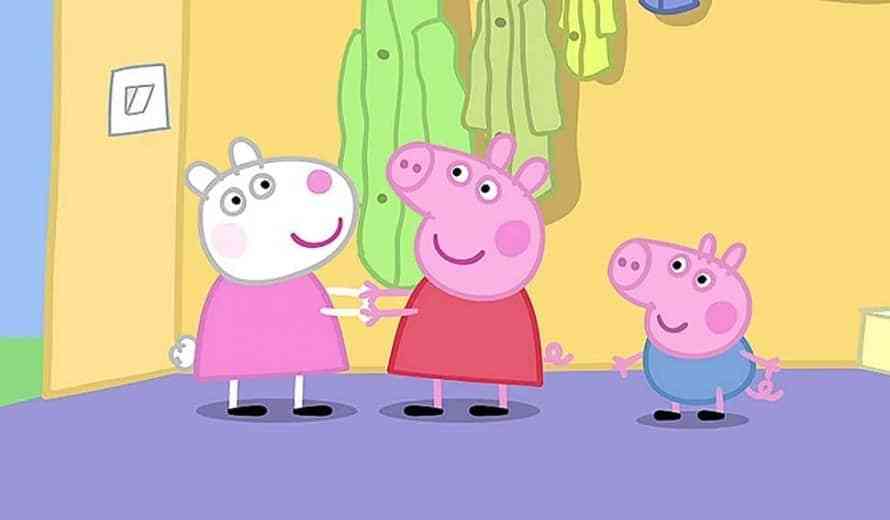Coping With The Love Monster: Effective Techniques For Calming Angry Children

Table of Contents
Understanding the Roots of Anger in Children
Understanding why children get angry is the first step towards effectively managing their outbursts. Anger, like other emotions, manifests differently depending on a child's developmental stage.
Developmental Stages and Anger Expression
-
Toddlers (1-3 years): Anger often presents as tantrums, hitting, biting, and screaming. These outbursts are usually triggered by unmet needs (hunger, tiredness, discomfort), frustration with limited communication skills, or simply asserting their independence.
-
Preschoolers (3-5 years): Preschoolers may exhibit more sophisticated anger expressions, including verbal aggression ("I hate you!"), temper tantrums that can last longer, and defiance. Reasons for anger often involve difficulty sharing, competition with siblings, and struggles with self-regulation.
-
School-Aged Children (6-12 years): As children mature, anger might manifest as arguing, sulking, withdrawing, or acts of defiance. Triggers can include academic pressure, social challenges (bullying, peer conflicts), and unmet expectations.
Identifying Triggers
Pinpointing the specific situations or events that trigger your child's anger is vital. Keeping a journal can be invaluable. Note down:
- Common Triggers: Hunger, tiredness, overstimulation (too much noise or activity), unmet expectations (not getting their way), changes in routine, sibling rivalry, fear, and anxiety.
- Tracking Responses: Record the child's behavior during and after the outburst. Note the intensity, duration, and any physical or verbal expressions of anger.
Effective Calming Techniques for Angry Children
Once you understand the roots of your child's anger, you can implement effective calming techniques.
Creating a Safe and Calm Environment
When your child is angry, create a safe space for them to express their emotions without judgment:
- Remove Distractions: Move to a quiet area where they won't be further stimulated.
- Calm and Soothing Tone: Speak in a calm, gentle voice, avoiding criticism or punishment.
- Physical Touch (if appropriate): A comforting hug or gentle touch can be soothing, but only if the child is receptive. Respect their personal space if they pull away.
Teaching Emotional Regulation Skills
Teach children to understand and manage their emotions:
- Deep Breathing Exercises: Simple breathing techniques can help calm the nervous system. Guide them to take slow, deep breaths.
- Mindfulness Techniques: Engage in activities that encourage focus and awareness, such as mindful coloring or listening to calming music.
- Visual Aids: Emotion charts or picture cards can help children identify and label their feelings.
Positive Reinforcement and Rewards
Reward calm behavior rather than solely focusing on punishment:
- Praise Calm Responses: Acknowledge and praise instances when they manage their anger constructively.
- Reward Charts: Use reward charts to track positive behavior and offer small rewards for progress.
- Focus on the Positive: Highlight and celebrate positive behaviors to reinforce self-control and emotional regulation.
When to Seek Professional Help
While most childhood anger is developmentally normal, some situations warrant professional help:
Recognizing Signs of Underlying Issues
Seek professional guidance if:
- Frequent, Intense Anger Outbursts: Outbursts are frequent, intense, and disproportionate to the situation.
- Difficulty Controlling Anger: The child struggles to manage their anger, even with implemented strategies.
- Aggressive or Destructive Behavior: Anger is expressed through physical aggression, property damage, or self-harm.
Resources and Support
If you need support, consider contacting:
- Child Psychologists: They can assess your child's emotional well-being and provide tailored interventions.
- Family Therapists: They can help address family dynamics that might contribute to the child's anger.
- Support Groups: Connecting with other parents facing similar challenges can offer valuable support and practical advice.
Conclusion
Coping with angry children requires patience, understanding, and a proactive approach. By understanding the roots of their anger, creating a supportive environment, teaching emotional regulation skills, and using positive reinforcement, you can significantly improve your child's emotional well-being and create a more peaceful family life. Start coping with angry children today by implementing these strategies. Mastering the art of calming angry children will benefit both your child and your family. Remember, seeking professional help is a sign of strength, not weakness. Effective techniques for coping with your child's anger are within your reach, leading to a happier and healthier family dynamic.

Featured Posts
-
 Investigating The Sound Perimeter Effect Of Music
May 22, 2025
Investigating The Sound Perimeter Effect Of Music
May 22, 2025 -
 Sound Perimeter Musics Impact On Our Lives
May 22, 2025
Sound Perimeter Musics Impact On Our Lives
May 22, 2025 -
 10 Episodes Of Peppa Pig Featuring The Baby In Cinemas This May
May 22, 2025
10 Episodes Of Peppa Pig Featuring The Baby In Cinemas This May
May 22, 2025 -
 Nederlandse Bankieren Vereenvoudigd Met Tikkie
May 22, 2025
Nederlandse Bankieren Vereenvoudigd Met Tikkie
May 22, 2025 -
 Is The Goldbergs Ending Exploring The Future Of The Show
May 22, 2025
Is The Goldbergs Ending Exploring The Future Of The Show
May 22, 2025
Latest Posts
-
 Couple Arrested Following Antiques Roadshow Appearance National Treasure Involved
May 22, 2025
Couple Arrested Following Antiques Roadshow Appearance National Treasure Involved
May 22, 2025 -
 Antiques Roadshow Discovery Results In Couples Arrest For Trafficking
May 22, 2025
Antiques Roadshow Discovery Results In Couples Arrest For Trafficking
May 22, 2025 -
 Current Status Of The Trans Australia Run World Record Attempt
May 22, 2025
Current Status Of The Trans Australia Run World Record Attempt
May 22, 2025 -
 National Treasure Trafficking Antiques Roadshow Leads To Arrest
May 22, 2025
National Treasure Trafficking Antiques Roadshow Leads To Arrest
May 22, 2025 -
 Updated Trans Australia Run World Record Attempt
May 22, 2025
Updated Trans Australia Run World Record Attempt
May 22, 2025
